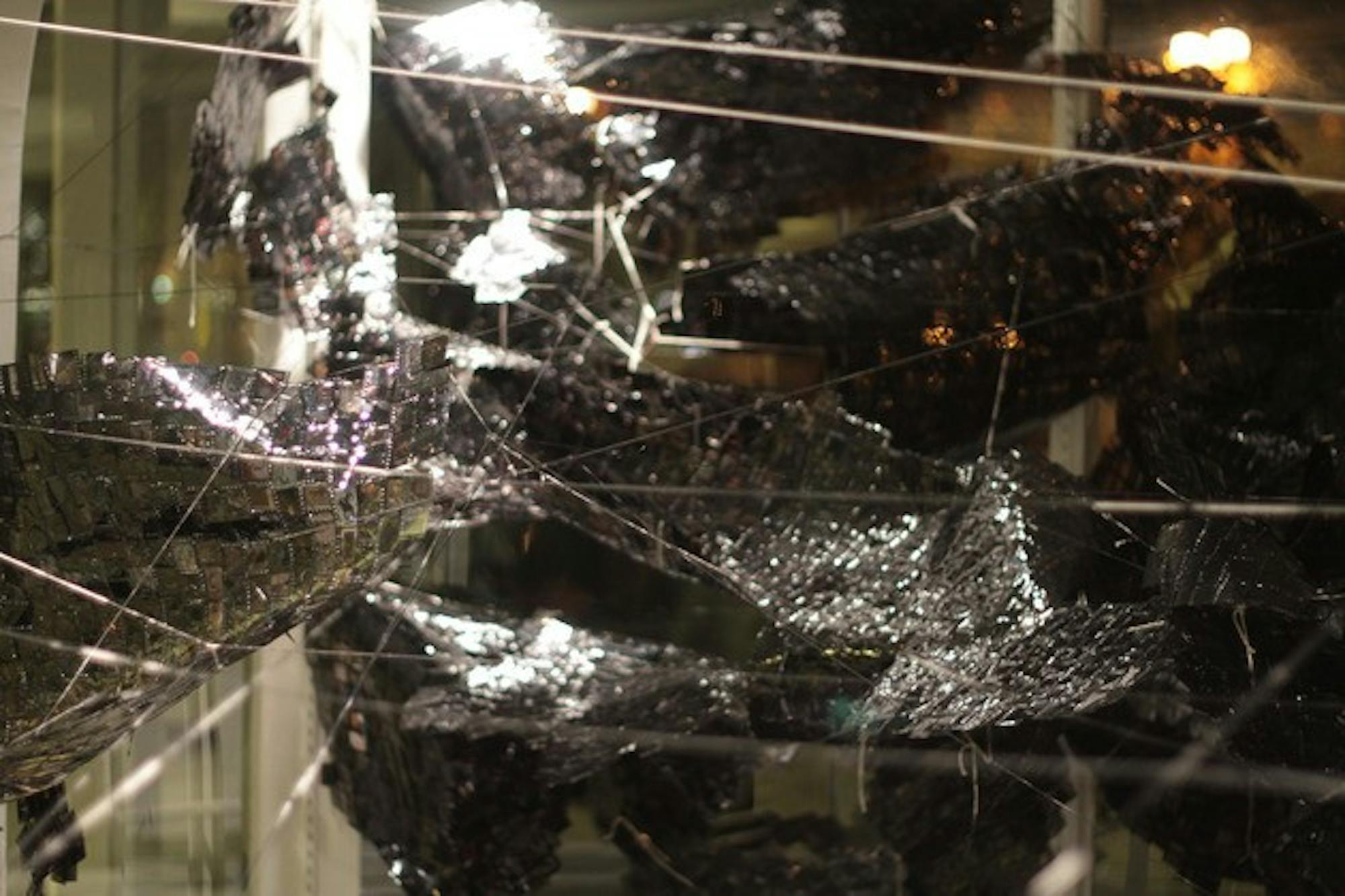The work's curving forms seem almost organic in shape, suspended by strings to create a three-dimensional negative space that compliments the forms themselves.
When viewed from within the Hopkins Center during the day, "Ebb and Flow" reacts with sunlight to take on a soft glow. By night, the Hop lights illuminate it like a precious stone.
The work is seemingly monochromatic, but upon closer inspection, it is clear that the forms are composed of hundreds of small, colored picture slides that contain images of important historical artwork.
"The sculpture is a raw representation of the many facets of change," Campbell said.
The composition presents picture slides that used to be used in lectures (now outdated) in an entirely modern way.
"Change can be both exciting and terrifying, damaging and liberating," she said.
Campbell's work is part autobiographical. A recent graduate, she channeled her feelings of tension and uncertainty into the exhibit, and her search for direction constitutes a major theme. Campbell said she hopes her audience will sense the chaos that she experienced, both in her post-graduation life and when creating and installing her piece.
"The strings spoke to instability and tension," studio art professor Virginia Beahan said. "The off-centered nature of the piece and the stretching involved gives it a somewhat sinister look."
Beahan noted that its dark appearance also added to its "sinister look." After closer examination, Beahan said she saw that "within that blackness there are jewel-like images, which is sort of a surprise."
"The title [is] very fitting for the work there's a tension between movement forward and backward," fellow studio art intern Luca Molnar '13 said. "The negative space created in the rotunda also invites contemplation about what creates space and line similar to how the coastline is in continual flux as the tides and waves ebb and flow."
Beahan drew a connection between Campbell's work and the work of Ghanaian sculptor El Anatsui, who often "makes work from recycled materials bottle caps, labels and other trash that have a look of drapery or fabric," Beahan said.
Campbell, an avid photographer, found inspiration for her piece in slides that Beahan acquired from the Hood Museum.
"The material was a beautiful representation of art history and the history of photography," Campbell said. "I felt compelled to create something so that others could interact with the material as well."
Campbell sealed each slide together using a clear epoxy and created larger sheets of film in the process. Rather than forcing the sheets to take on specific shapes, she allowed the material to choose its own form.
"They started to curve and bend how they wished, I wanted to allow the material to do what it wanted to do," Campbell said.
Campbell used string to hang the film up, suspending the forms "because it allowed the film to curve and interact without interruption."
"Sharing a studio space with Lexi, it's been really fascinating to see her energetic artistic process transition into installation, using materials that relate to her preferred medium of photography, but used in a 3D way," Molnar said.
"Ebb and Flow" is Campbell's first installation piece, a work of art made to fill a particular exhibition space.
Campbell had underestimated the size of the Rotunda, and as a result, she had to place her limited sheets of film strategically.
"Because the space is so specific, I couldn't make a lot of my decisions about the composition until I got into the rotunda on Wednesday," Campbell said.
The opportunity for studio art interns to showcase their work in such a highly public location like the Barrows Rotunda should be highly valued, Beahan said.
"Lexi took artistic risks in making a piece that was new and three-dimensional in a place that has a 360-degree viewpoint," she said. "I applaud her willingness to throw herself into the process of creating this new work."




